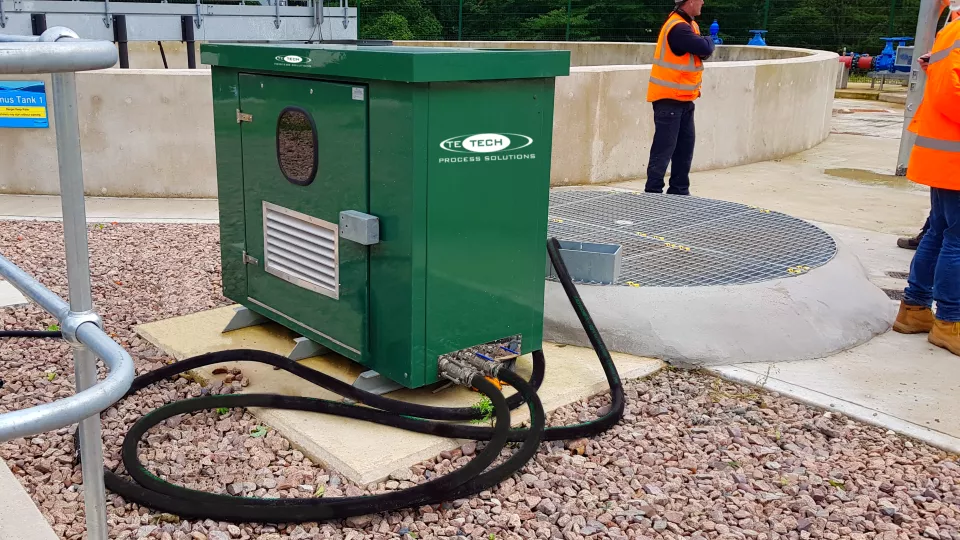Mike Froom, Business Development Director for Te-Tech Process Solutions in Southampton, UK, explores the benefits of a pulsed air lift sludge pumping option compared to conventional pumped systems.

A te-sewpas unit at Stocksbridge.
When Yorkshire Water decided to relocate Stocksbridge Wastewater Treatment Works 2km to the south to allow a major housing development, the brief to Mott MacDonald Bentley (MMB) was for reliability, sustainability and low operating cost. The relocation also allowed for an upgrade from 13,000 population to 15,000 for the 2030 design horizon.
The new £15.65 million works consists of duty/standby fine screens, a vortex grit removal unit and two 15.5m diameter primary settling tanks followed by biological treatment in seven trickling filters with two 16.7m humus settlement tanks. Sludge produced in the humus settlement tanks is delivered to a chamber alongside the tanks and then flows by gravity to re-enter the process upstream of the primary settlement tanks.
Simple, low opex sludge pumping
For this critical duty, MMB selected the te-sewpas pulsed air lift pump system supplied by Te-Tech Process Solutions. The self-contained unit incorporates a 4.6kW duty side channel air blower, actuated air control valves, air manifold and control panel housed within a weatherproof GRP enclosure and is delivered to site fully assembled and tested. Each pulse of air lifts a quantity of sludge and discharges it from the sludge discharge pipe. A programmable timer in the PLC allows the frequency and duration of desludging to be adjusted to allow the sludge to consolidate thus eliminating any potential ‘rat-holing’ and ensuring consistent desludging.
The unit can be located close to the tanks that it serves with flexible air delivery hoses routed through ducts to each of the desludge chambers. The air delivered is hot and as a result there is no need for thermal lagging or insulation. Each te-sewpas unit can serve up to four primary or humus tanks with typical individual air delivery hose length up to 35m.
At Stocksbridge, a single Type B te-sewpas unit with duty/standby air blowers serves the two humus tanks. Rather than using the standard control panel, MMB decided to integrate the te-sewpas controls into the central PLC and Te-Tech provided a functional design specification for this purpose. The project was completed in October 2019. “We’ve been using the air lift systems of various makes on our sites for the last 20–25 years,” says Yorkshire Water’s Wastewater Asset Planning Sponsor Jan Buczylo, “The te-sewpas is particularly robust and we decided to retrofit additional systems in place of conventional progressive cavity pumps at both Stillington and Sutton-on-the-Forest.” Installation of these two systems was completed in April 2021.
Significant whole life cost savings
The te-sewpas system provides significant whole life cost savings when compared to conventional pumped systems. For a typical installation serving two tanks, like the Stocksbridge project, based on an estimated 25% reduction in the electrical power consumption and reduced maintenance requirements, te-sewpas provides a 40% lower capital cost and 50% reduction in operational cost compared to a pumped desludge system.


